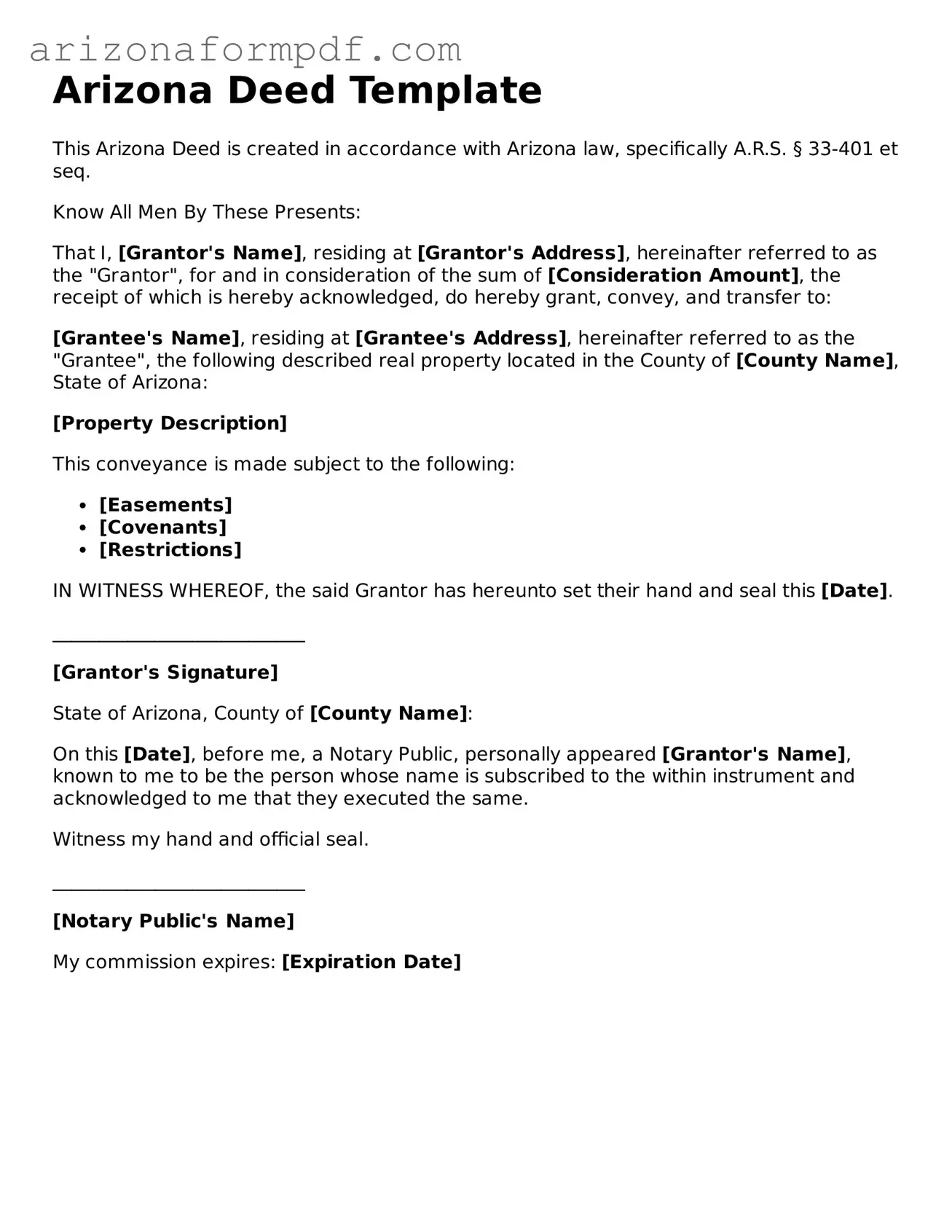Arizona Deed Template
This Arizona Deed is created in accordance with Arizona law, specifically A.R.S. § 33-401 et seq.
Know All Men By These Presents:
That I, [Grantor's Name], residing at [Grantor's Address], hereinafter referred to as the "Grantor", for and in consideration of the sum of [Consideration Amount], the receipt of which is hereby acknowledged, do hereby grant, convey, and transfer to:
[Grantee's Name], residing at [Grantee's Address], hereinafter referred to as the "Grantee", the following described real property located in the County of [County Name], State of Arizona:
[Property Description]
This conveyance is made subject to the following:
- [Easements]
- [Covenants]
- [Restrictions]
IN WITNESS WHEREOF, the said Grantor has hereunto set their hand and seal this [Date].
___________________________
[Grantor's Signature]
State of Arizona, County of [County Name]:
On this [Date], before me, a Notary Public, personally appeared [Grantor's Name], known to me to be the person whose name is subscribed to the within instrument and acknowledged to me that they executed the same.
Witness my hand and official seal.
___________________________
[Notary Public's Name]
My commission expires: [Expiration Date]
